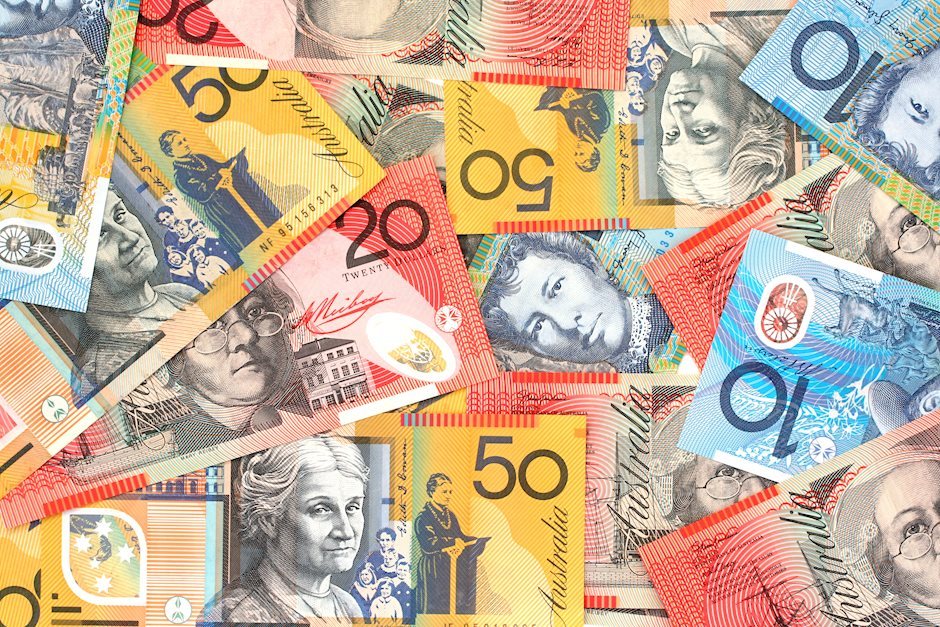Australian Dollar trims daily losses as markets asses Jerome Powell's words and local CPI figures
- Aussie remains weak after CPI data from Australia.
- The Fed held rates steady as expected and Powell gave clear clues on the next steps.
- Divergences between the RBA and Fed might bail out the Aussie.

The Aussie continued to underperform against the USD on Wednesday as markets digested mixed inflation data from Australia but managed to clear daily losses after the Federal Reserve (Fed) decision. A slightly softer outlook from China continues to fuel concerns about the Australian economy. However, the Reserve Bank of Australia's (RBA) reluctance to introduce rate cuts due to high inflation could provide a safety net for the Aussie.
The continued high inflation pressure on the Australian economy is leading the RBA to hold off on rate cuts. Predictions suggest that the RBA will be among the last of the G10 countries to initiate a rate cut, a move that could limit further downside pressure on the Aussie.
Daily digest market movers: Aussie weakness remains after CPI data from Australia, markets digests Powell's words
- The prevalent 'risk-off' sentiment continues due to worries about a slowdown in the Chinese economy, significantly impacting Australia's economic stance. Attention is now focusing on the June and Q2 Consumer Price Index (CPI) figures released on Wednesday.
- The Australian Bureau of Statistics (ABS) reports that Australia's Q2 headline CPI saw an increase of 1.0% QoQ, with an acceleration to 3.8% YoY from the previous 3.6%. At the same time, June's headline CPI is projected to have fallen to 3.8% YoY.
- Considering the inflation rate considerably exceeds the 2-3% target range, the RBA is expected to remain patient with its policy changes. This cautious approach means that the swaps market predicts the first 25 bps cut coming only next summer.
- The session's highlight was the Federal Reserve (Fed) decision followed by Jerome Powell's words.
- The Federal Reserve has maintained the federal funds rate at 5.25% to 5.5%, noting moderate job gains and a slight rise in unemployment but that inflation is still elevated.
- Jerome Powell during the press conference noted that the bank requires additional data to embrace cuts but that if figures continue to show progress, the bank is ready to respond.
- Markets reacted positively, with increases in gold and stocks and a weaker US Dollar; jobless claims and nonfarm payrolls will be crucial for future decisions and markets bets.
AUD/USD technical analysis: Bearish position, bullish traction is not enough to trigger a reaction
The AUD/USD's sustained trade below the 20, 100 and 200-day Simple Moving Average (SMA) confirms an overall bearish outlook. Despite indicator readings remaining firmly in negative territory, the oversold condition might prompt a correction. However, weak bullish momentum could lead to a period of sideways trading unless a major fundamental development occurs.
The key support levels have been adjusted to 0.6530 and 0.6500, with resistance levels at 0.6600 (200-day SMA), 0.6610 and 0.6630.
Inflation FAQs
Inflation measures the rise in the price of a representative basket of goods and services. Headline inflation is usually expressed as a percentage change on a month-on-month (MoM) and year-on-year (YoY) basis. Core inflation excludes more volatile elements such as food and fuel which can fluctuate because of geopolitical and seasonal factors. Core inflation is the figure economists focus on and is the level targeted by central banks, which are mandated to keep inflation at a manageable level, usually around 2%.
The Consumer Price Index (CPI) measures the change in prices of a basket of goods and services over a period of time. It is usually expressed as a percentage change on a month-on-month (MoM) and year-on-year (YoY) basis. Core CPI is the figure targeted by central banks as it excludes volatile food and fuel inputs. When Core CPI rises above 2% it usually results in higher interest rates and vice versa when it falls below 2%. Since higher interest rates are positive for a currency, higher inflation usually results in a stronger currency. The opposite is true when inflation falls.
Although it may seem counter-intuitive, high inflation in a country pushes up the value of its currency and vice versa for lower inflation. This is because the central bank will normally raise interest rates to combat the higher inflation, which attract more global capital inflows from investors looking for a lucrative place to park their money.
Formerly, Gold was the asset investors turned to in times of high inflation because it preserved its value, and whilst investors will often still buy Gold for its safe-haven properties in times of extreme market turmoil, this is not the case most of the time. This is because when inflation is high, central banks will put up interest rates to combat it. Higher interest rates are negative for Gold because they increase the opportunity-cost of holding Gold vis-a-vis an interest-bearing asset or placing the money in a cash deposit account. On the flipside, lower inflation tends to be positive for Gold as it brings interest rates down, making the bright metal a more viable investment alternative.
Author

Patricio Martín
FXStreet
Patricio is an economist from Argentina passionate about global finance and understanding the daily movements of the markets.

















